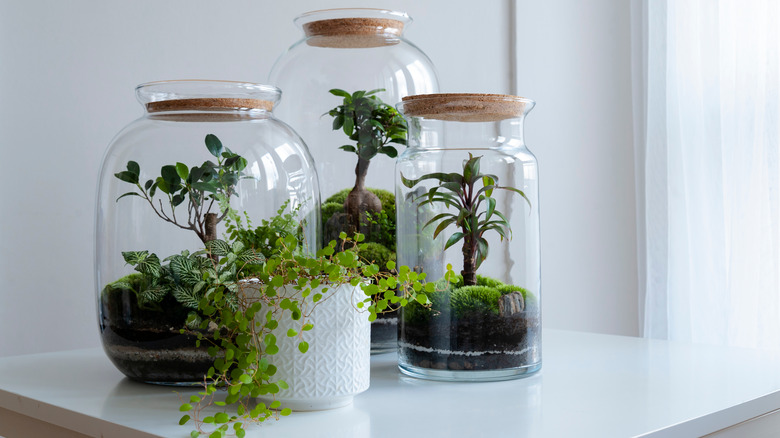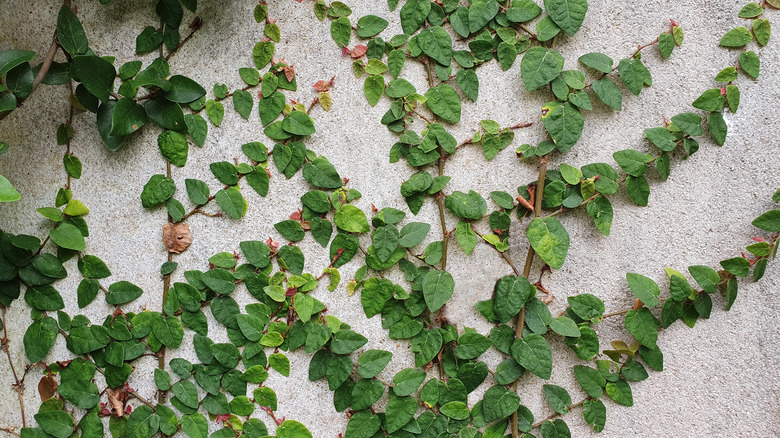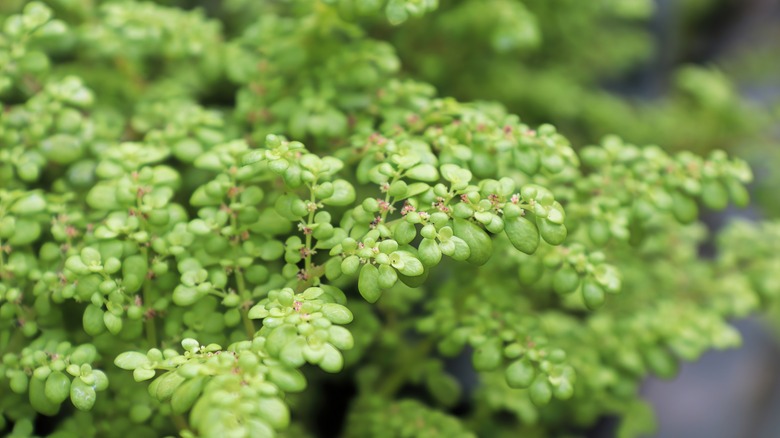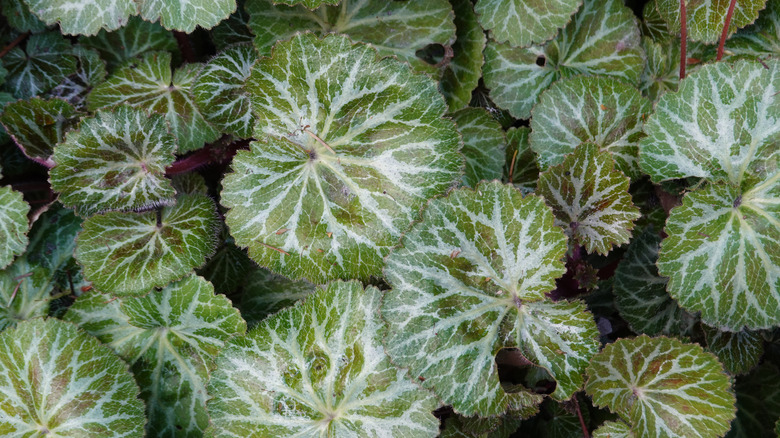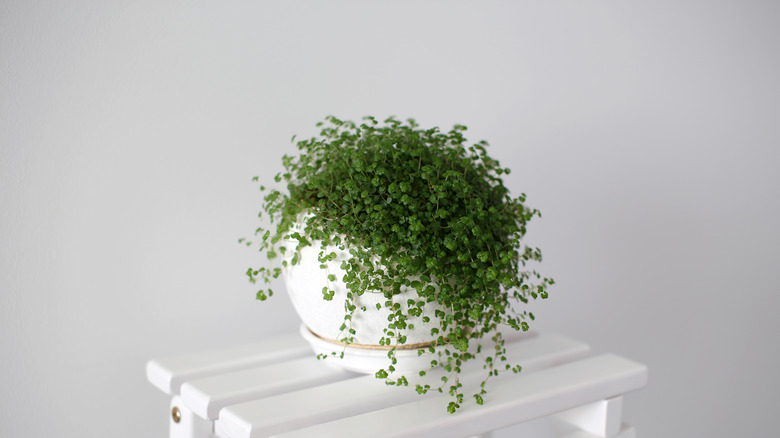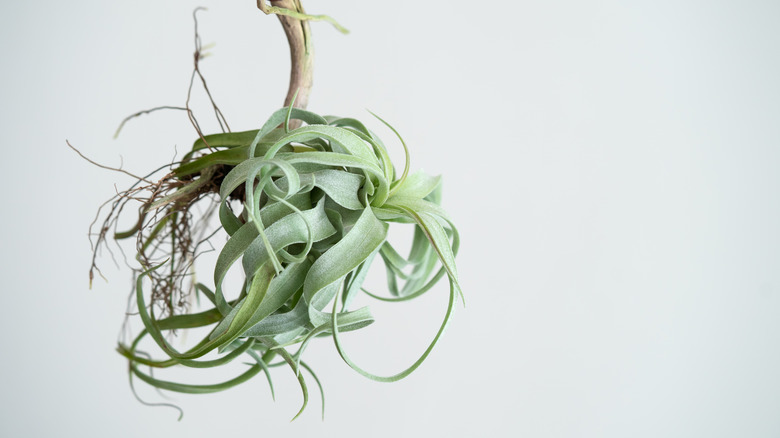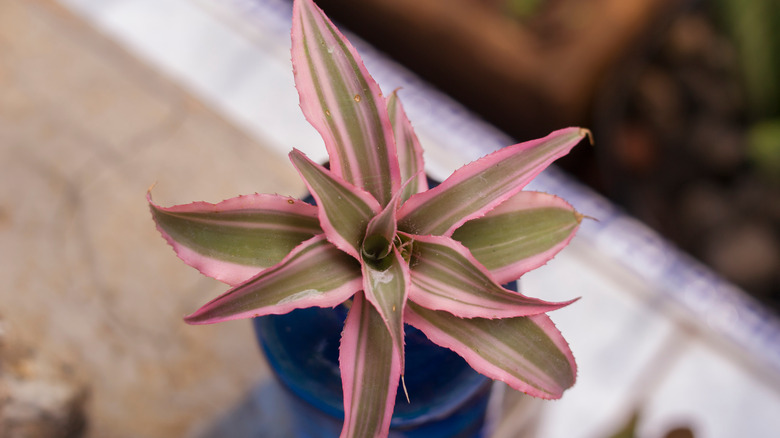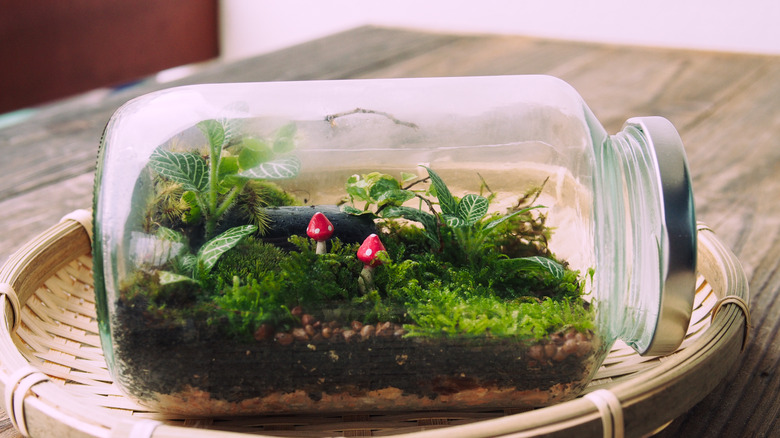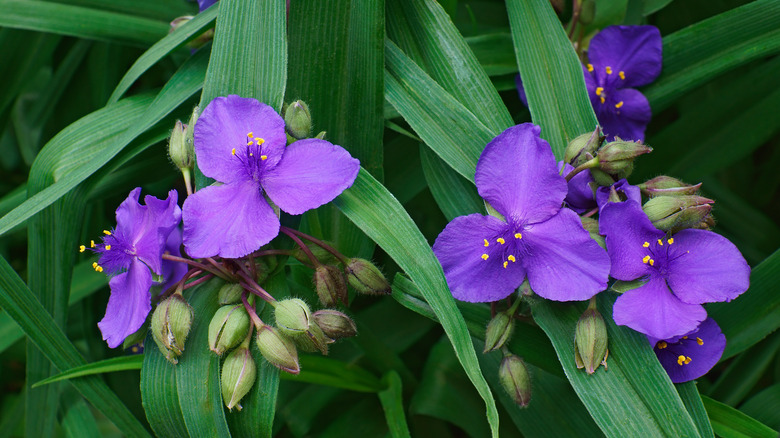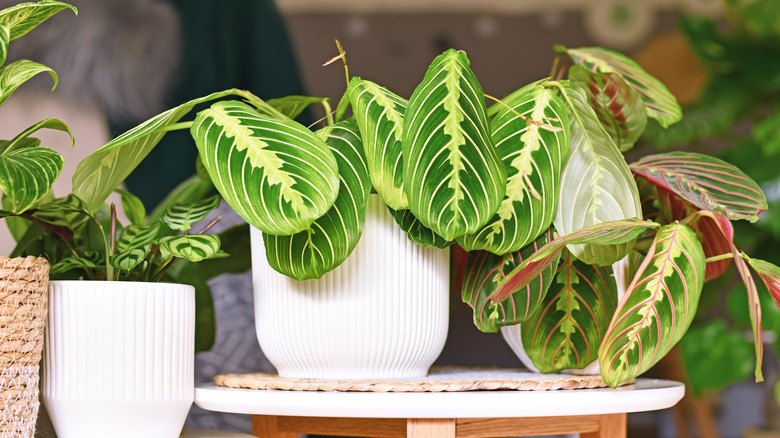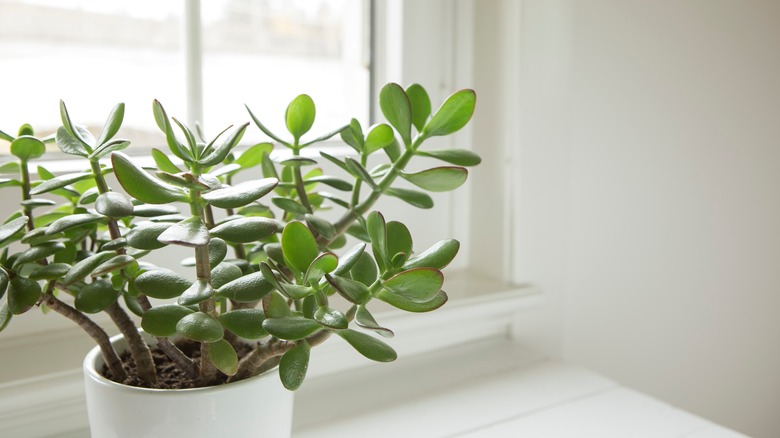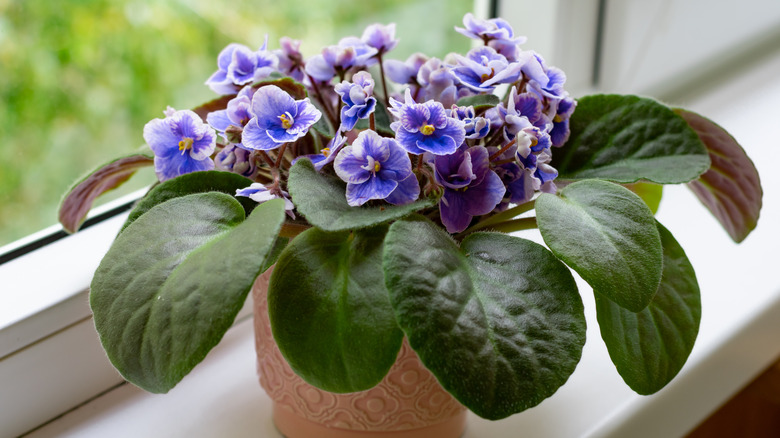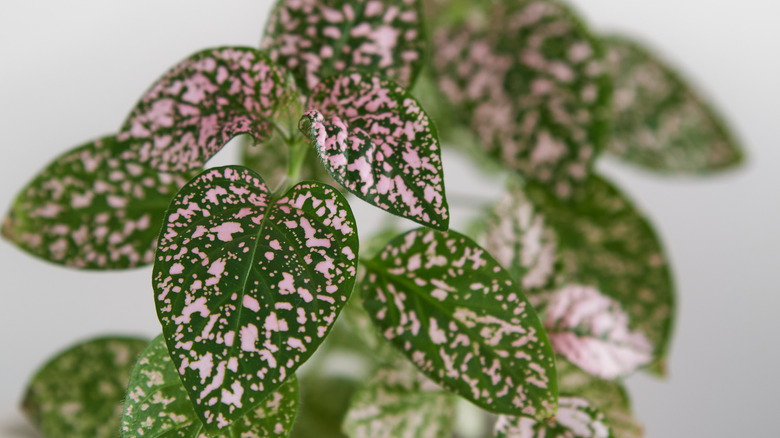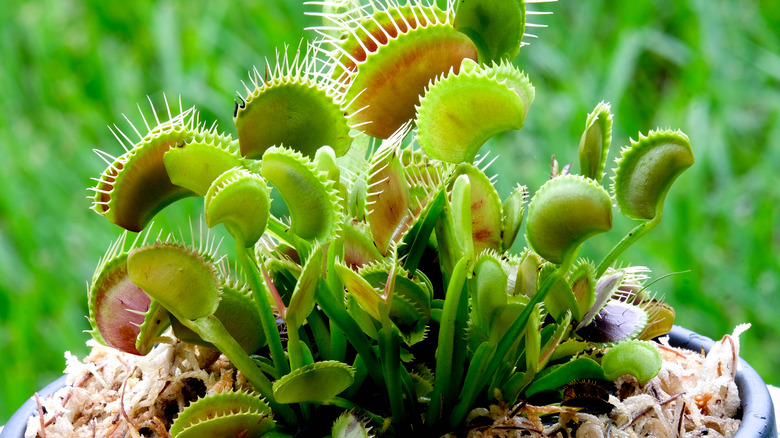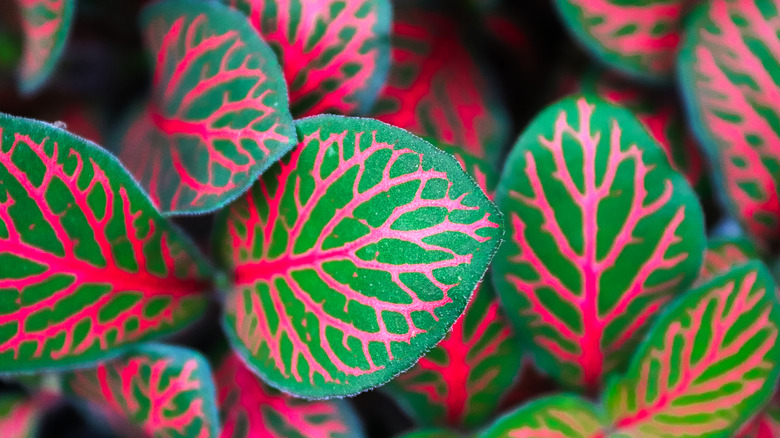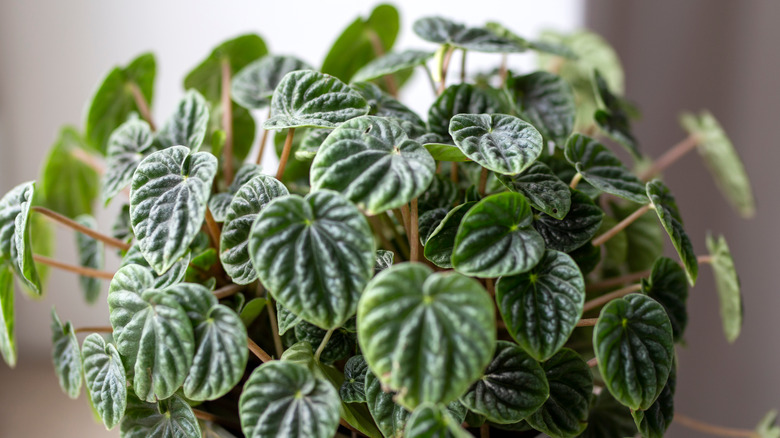15 Types Of Terrarium Plants Anyone Can Take Care Of
We may receive a commission on purchases made from links.
Terrarium plants are plants that are grown in small open or sealed glass containers, according to Britannica. They're a different way of incorporating greenery into your home without having to worry about huge pots filled with dirt that could be spilled all over your floor. Instead, they can take up small spaces by your window or on your side tables — some are even made to hang. They're easy to plant and are low maintenance. Terrarium plants can be a fun project to do with your friends, kids, or family; you can decorate the inside of containers however you like, with multiple plants and even other elements.
Terrarium plants tolerate humidity since they're in an enclosed space and are able to live longer with a low dose of sunlight, like these listed by Garden Tabs. The most common plants that live in terrariums are succulents. It's important to keep in mind that not all plants are able to live in an open or sealed container, so here are 15 types of terrarium plants you can grow and take care of.
Creeping fig
Creeping fig plants (Ficus pumila) is a fig vine that can grow along the inside of a terrarium in low indirect sunlight and shady areas. They have beautiful green leaves and thin brown stems. You can grow them in open terrariums so that their long vines can grow and hang over the container. They need water when the top of their soil is dry, don't overwater them. They can be grown with any multi-colored plant for a great look in your terrarium.
Artillery fern
The Artillery Fern, pilea microphylla, is part of the pilea family, so they're not actually ferns. Instead, they're known for shooting their seeds out with a popping sound which can be shocking considering they have such a delicate appearance. Long thin brown stems with small green leaves along them can be grown in a terrarium. They should be watered every other day to keep their soil moist and should get medium to bright indirect light.
Strawberry begonia
The strawberry begonia, also known as saxifraga stolonifera, keeps its shape and leaves in a compact hold that is perfect for a terrarium. Even though the plant isn't a begonia and doesn't grow strawberries, it has begonia-like features that make folks rave over them. It can grow up to 8 inches tall and 6 inches wide, so it's best to use an open terrarium to allow it to breathe. You can plant it with other foliage or moss to make it colorful.
Baby's tears
The soleirolia soleirolli, also known as baby's Tears, is the perfect plant for your terrarium. It can be grown in a sealed container where the humidity will protect it rather than kill it. The plant grows long vines that have beautiful small green leaves which can pop through the seal if you open it. It grows 3 to 6 inches tall and needs bright indirect sunlight. Even though it's a low-maintenance plant, it does need to be watered regularly; make sure the soil never runs dry.
Air Plants
One of the most special plants you could grow in your terrarium is an air plant (tillandsia) because they don't need soil to grow. They purify the air, absorb the nutrients they need through their leaves, and absorb water. Instead of using soil to grow, they attach themselves to a host in order to survive, so they can be put in small spaces. Air plants have beautiful green leaves that sometimes turn red. They can grow up to 8 inches tall and need bright or filtered light.
Starfish plant
The Starfish (cryptanthus bivittatus) is a beautiful, slow-growing, long-lasting terrarium plant. It has long pointy leaves that change colors depending on how much sunlight it receives. It can change from white, red, green, or maroon. It can grow up to 6 inches tall and wide. The Starfish plant can sometimes grow a small white flower in its center, which could be placed with other small flowers in the terrarium. You want the terrarium to be an open container to allow the leaves to expand their full length.
Moss
Moss (bryophyta) is the most common plant grown in terrariums since they're the easiest and don't require a lot of attention. They are best grown in closed terrariums since they need all of the humidity they can get. They are slow-growing in a moisture-filled environment. You can decorate them with a few rocks and sticks by planting the moss on top to give the container a woods-like look. They need low light to thrive, and you can tuck them in small corners of your home.
Spiderwort
Tradescantia Virginiana, also known as the spiderwort plant, should be grown in a closed terrarium. It has stunning sharp blade leaves with beautiful violet-blue flowers that grow around them. Possibly one of the larger growing plants that can reach from 1 to 3 feet tall and 2 to 3 feet wide, so it should be grown in a larger terrarium. They need moist soil, which could keep you from watering it daily with the humidity from the enclosed container.
Prayer plant
Another large terrarium plant is the prayer plant (maranta leuconeura), and they're similar to nerve plants by having large green leaves with various white lines over every part. They prefer warmer weather with a good amount of sunlight. If you notice that their leaves are folded in, they need more sunlight to open up. They should be watered regularly throughout the spring and summer and not so much in fall and winter.
Jade plant
If you want a little bit of luck, then adding jade plants (crassula ovata) to your space might bring you some. They have long green stems with small thick leaves that appear rubber-like. They require more watering than other plants so keeping them in an open terrarium will make it easy for you to water them. You want to make sure the top of their soil never dries out. They also need to be placed in a brighter lit area in your home. Grow more jade plants by breaking off leaves and sticking them in the soil to grow roots.
African Violet
African violets (saintpaulia) are harder to grow in an open terrarium since they need a lot of humidity, so a closed terrarium is best for them. They grow small, but they do they have beautiful violet flowers with yellow centers and green leaves. African violets need bright indirect light indoors and should have warm moist soil, which they get from inside the container when used in terrariums. Just water the soil, not the actual plant.
Polka dot plant
A polka dot plant is also known as hypoestes phyllostachya and can be the perfect addition to your home with its multicolor leaves. They can range from magenta, green, pink, red, and white polka dot colors. Plant them in an open terrarium to allow them to grow to their full potential. They grow up to 20 inches tall and wide, so they definitely need all the space they can get. Water them regularly as they grow and lessen during the winter.
Venus flytrap
The Venus flytrap (dionaea muscipula) can be the talk of your home since it's known to be one of the most exotic plants. It will definitely add some color to parts of your home since their mouth traps are red and their stems are green. They can be grown in a large closed terrarium since they can get snappy — but they also like to eat bugs that might find difficulty getting into an enclosed container. They grow about 2 to 3 inches tall and 6 to 8 inches wide. Keep soil watered and humid with rainwater rather than tap water.
Nerve plants
Nerve plants (fittonia albivenis) have stunning patterns on their large green leaves known as veins that range in the colors of white, pink, yellow, red, or purple. Their leaves can also change colors instead of staying green; they can be blue or dark blue-green. They can be grown in sealed terrariums since they don't grow very big. They grow up to 6 inches tall and 18 inches in spread. Keep the plant away from direct sunlight and water enough to keep the soil moist.
Peperomia
Peperomia plants (peperomia caperata) are slow-growing plants best planted in terrariums. They have short green stems with beautiful small green leaves that can have a few different spots of color, such as red. You can grow them with polka dot plants to add more color to your container. Peperomia plants require water when the top of their soil has dried up, and they need bright indirect sunlight. There are over 1,000 species of the plant, and some have succulent-like characteristics which require lower humidity than others. They can survive in closed containers or open containers.
